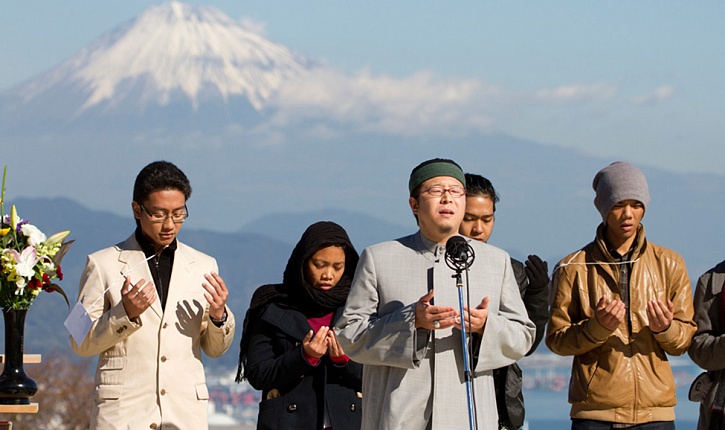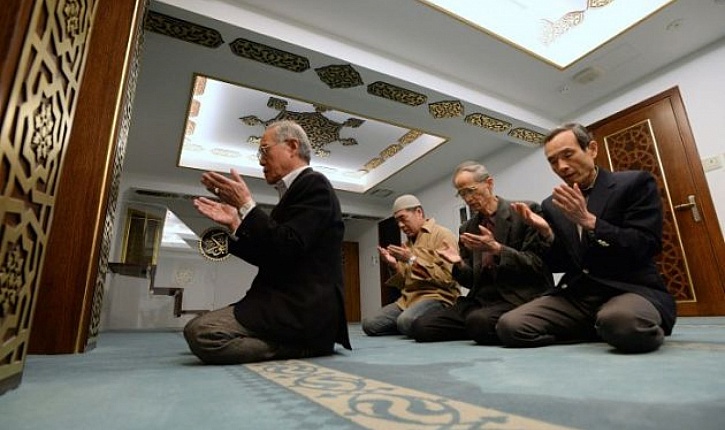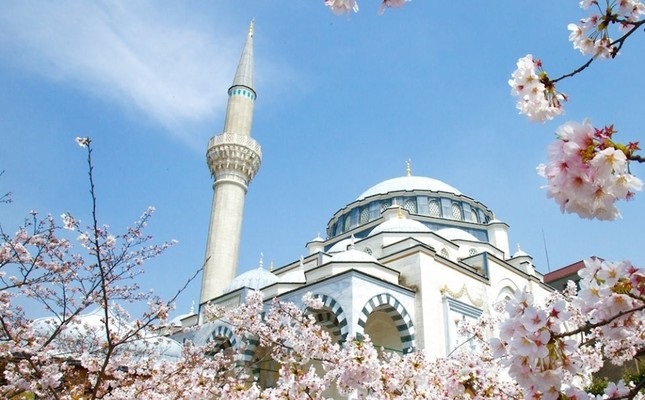In Japan, the number of Muslims has more than doubled in 10 years.
In Japan, the number of Muslims has grown dramatically over the past decade, as more and more people convert to Islam.
According to Tanada Hirofumi of Waseda University, the number of Muslims in Japan has more than doubled in the last 10 years.
In 2010, statistics showed that the number of Muslim in Japan was 110,000. By the end of 2019, their number had increased to 230,000.
The growing number of Muslims has led to the construction of mosques, places of prayer, and halal food restaurants across the country.
Today, there are 110 active mosques in Japan, which is a long-expected change, according to Muhammad Tahir Abbas Khan, a professor at Ritsumeikan University of Asia and the Pacific and head of the Beppu Muslim Association (AMB).
Though Muslims have more opportunities for prayer, it is still difficult for them to find their final resting place. About 99% of Japanese cremate their dead, which is forbidden in Islam.
AMB started looking for a new cemetery almost a decade ago. After gathering between 60 million and 70 million yen ($582,000 - $ 679,000), the Muslims brought the construction process closer. However, residents of nearby villages have expressed concerns about the water supply. The Japanese, who are not used to cemeteries where bodies are buried, fear that the dead will infect the water.
These concerns simply ignore scientific evidence about the safety of burial sites, says Kawabe, who herself has faced calls and letters in support of Muslims.
"They tell me: "You're Japanese, why are you on the Muslim side? A lot of people are scared, " she sighs.
Despite these concerns, Han says Japan is "a good place to live.
"We are trying to integrate," Han says. "We have accepted Japan as our home country."
Let us recall that Islam appeared in Japan in the 1920s as a result of the immigration of several hundred Tatar Muslims from Russia after the revolution of 1917.
In 1930, the number of Muslims in Japan reached about 1,000 people of various origins.
Another wave of migrants that increased the Muslim population peaked in the 1980s, along with migrant workers from Iran, Pakistan, and Bangladesh
According to Tanada Hirofumi of Waseda University, the number of Muslims in Japan has more than doubled in the last 10 years.
In 2010, statistics showed that the number of Muslim in Japan was 110,000. By the end of 2019, their number had increased to 230,000.
The growing number of Muslims has led to the construction of mosques, places of prayer, and halal food restaurants across the country.
Today, there are 110 active mosques in Japan, which is a long-expected change, according to Muhammad Tahir Abbas Khan, a professor at Ritsumeikan University of Asia and the Pacific and head of the Beppu Muslim Association (AMB).
Though Muslims have more opportunities for prayer, it is still difficult for them to find their final resting place. About 99% of Japanese cremate their dead, which is forbidden in Islam.
AMB started looking for a new cemetery almost a decade ago. After gathering between 60 million and 70 million yen ($582,000 - $ 679,000), the Muslims brought the construction process closer. However, residents of nearby villages have expressed concerns about the water supply. The Japanese, who are not used to cemeteries where bodies are buried, fear that the dead will infect the water.
These concerns simply ignore scientific evidence about the safety of burial sites, says Kawabe, who herself has faced calls and letters in support of Muslims.
"They tell me: "You're Japanese, why are you on the Muslim side? A lot of people are scared, " she sighs.
Despite these concerns, Han says Japan is "a good place to live.
"We are trying to integrate," Han says. "We have accepted Japan as our home country."
Let us recall that Islam appeared in Japan in the 1920s as a result of the immigration of several hundred Tatar Muslims from Russia after the revolution of 1917.
In 1930, the number of Muslims in Japan reached about 1,000 people of various origins.
Another wave of migrants that increased the Muslim population peaked in the 1980s, along with migrant workers from Iran, Pakistan, and Bangladesh


